Walking through the narrow cobbled streets of Urbino, I felt transported back in time to when this small Italian town was a glowing center of the Renaissance. The moment I stepped into the Ducal Palace, I understood why Urbino is considered home to the “Mathematical Renaissance” – a place where art, science, and architecture blended perfectly.
The palace stands as one of the most impressive examples of Renaissance architecture in Italy, yet remains surprisingly uncrowded compared to Florence or Rome’s famous landmarks.
The sunlight streamed through tall windows, highlighting the perfect proportions of each room. This wasn’t just any Renaissance palace – it was a carefully designed masterpiece where every wall, ceiling, and doorway followed mathematical principles that created a sense of harmony.
Built for Duke Federico da Montefeltro in the 15th century, the palace became a gathering place for artists, scholars, and visionaries who shaped Renaissance thinking.
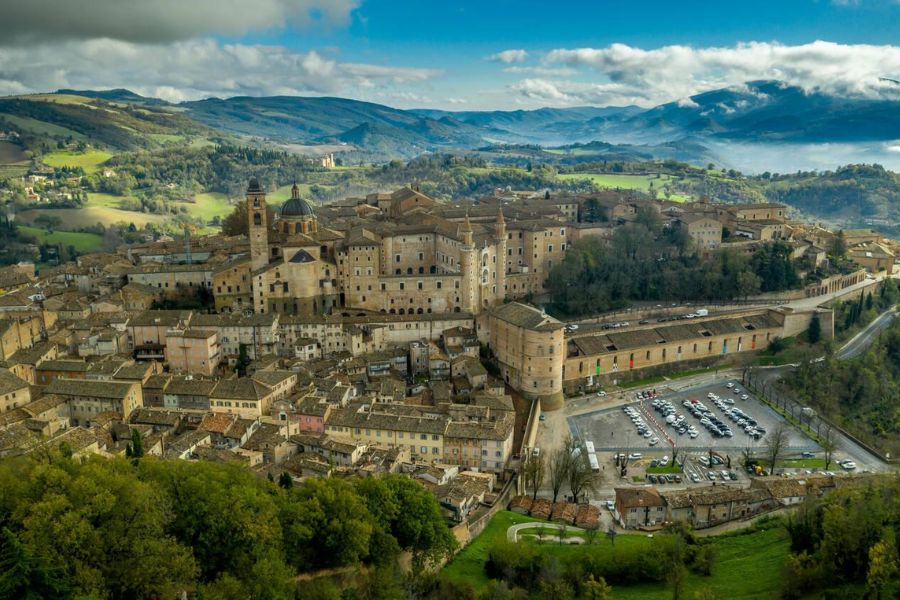
As I wandered through its famous studiolo with intricate wood inlays and the grand spiral staircase, I couldn’t help but think about Raphael, who was born just steps away. Urbino’s importance goes beyond just being his birthplace – this UNESCO World Heritage site represents a perfect example of Renaissance urban planning. My visit left me wondering why more travelers don’t include this remarkable town on their Italian itineraries.
Urbino: A Renaissance Jewel
Nestled in the rolling hills of Italy’s Marche region, Urbino stands as one of the most perfect expressions of Renaissance ideals and culture. This small yet magnificent city captured my heart with its harmonious architecture and rich artistic heritage.
History of Urbino
Urbino’s transformation from a medieval town to a Renaissance powerhouse began in the 15th century. I was fascinated to learn that while Florence and Rome often dominate Renaissance narratives, Urbino developed its own distinct “mathematical Renaissance” style.
The city earned UNESCO World Heritage status in 1998, recognizing its exceptional urban planning. Walking through its steep, winding streets, I felt transported through time. The entire historic center remains remarkably intact.
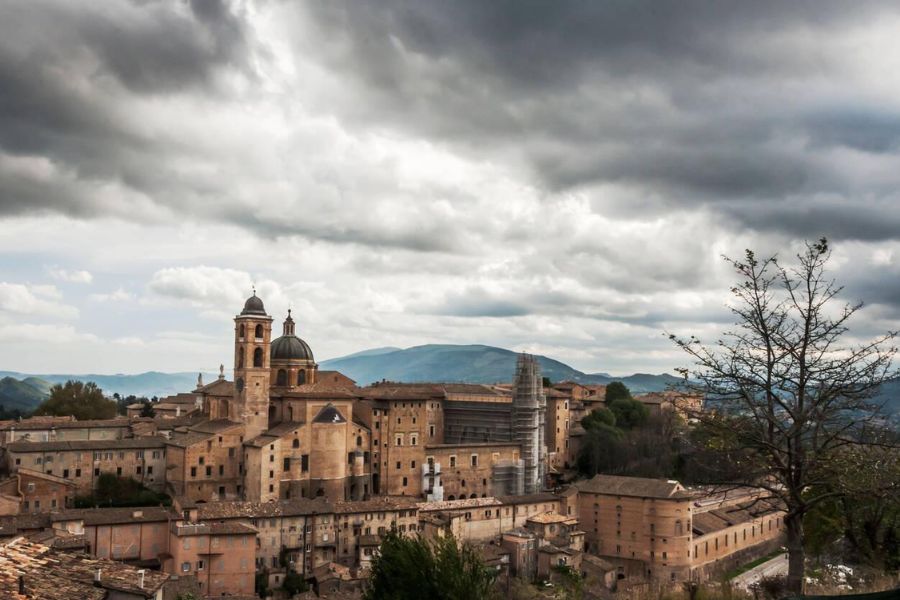
Urbino reached its golden age during the 15th century when it became a major cultural hub attracting scholars, artists, and intellectuals from across Europe. It’s also the birthplace of Raphael, one of the greatest Renaissance painters, whose early artistic development was shaped by the city’s creative atmosphere.
The Influence of Federico da Montefeltro
Federico da Montefeltro, Duke of Urbino from 1444 to 1482, was the visionary behind Urbino’s Renaissance glory. His military prowess earned him wealth, but it was his patronage of arts and learning that transformed the city.
I was struck by Federico’s famous profile with his distinctive broken nose, immortalized in portraits throughout the palace. Despite his warrior background, he created one of Europe’s most refined courts and assembled one of the largest libraries of Renaissance Italy.
Federico invited leading artists and thinkers to Urbino, including Piero della Francesca and Leon Battista Alberti. Under his guidance, the city became a laboratory for Renaissance ideals where art, science, and humanism flourished together.
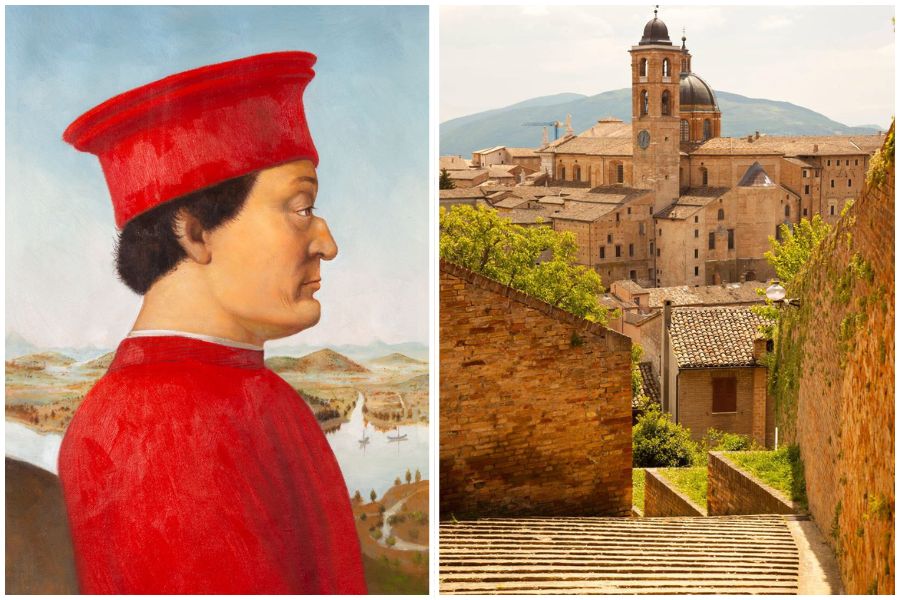
The duke’s legacy is best seen in the magnificent Palazzo Ducale, which I’ll explore in more detail later. His vision created not just beautiful buildings but a complete urban environment expressing Renaissance harmony and proportion.
The Architectural Marvel of the Ducal Palace
Walking through the Ducal Palace of Urbino feels like stepping into the perfect embodiment of Renaissance ideals. The palace stands as a testament to human creativity and architectural brilliance that transformed a rugged hilltop into one of Italy’s most beautiful buildings.
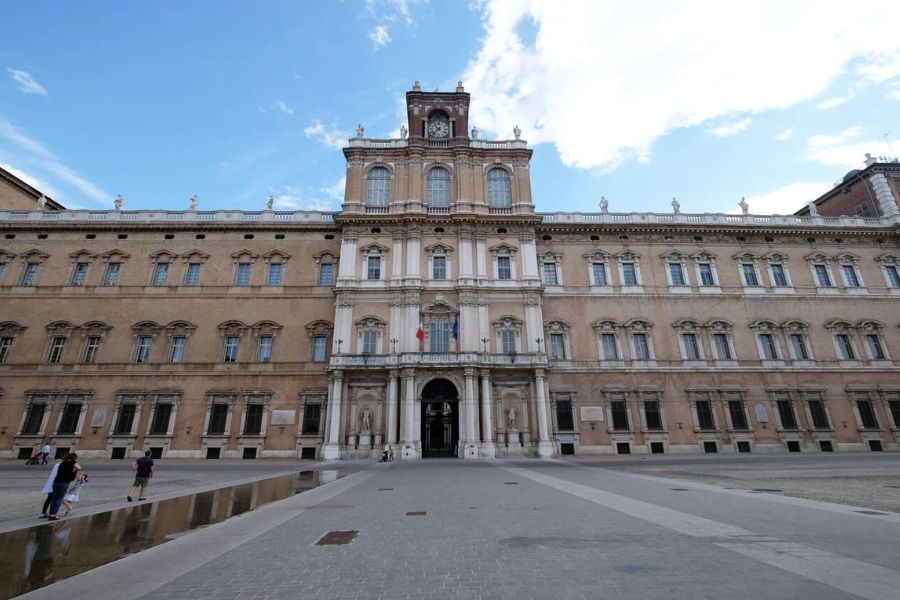
Design and Construction
The Palazzo Ducale di Urbino wasn’t just built; it was carefully crafted to represent Duke Federico da Montefeltro’s vision of an ideal Renaissance court. I was amazed to learn that construction began in the mid-15th century on a challenging hillside location. Despite the rough terrain, the architects created a harmonious structure that blends perfectly with the surrounding landscape.
The palace features two distinctive façades. The east side shows a more fortress-like appearance while the west side opens up to the city with elegant loggia and windows. Inside, I discovered perfectly proportioned rooms and corridors that create a sense of balance and harmony.
What struck me most was the ingenious use of space. Even with irregular terrain, the architects created symmetrical courtyards and logical pathways throughout the complex.
Luciano Laurana and Venetian Touches
The brilliance of the Ducal Palace owes much to architect Luciano Laurana, whom Duke Federico brought from Dalmatia. Laurana’s mastery of proportion and perspective transformed the palace between 1465 and 1472. His contribution is especially evident in the magnificent courtyard with its perfect classical proportions.
I could see distinct Venetian influences throughout the palace. The delicate stonework, rounded arches, and the famous studiolo (study) showcase influences from northern Italian design traditions. Laurana incorporated these elements while maintaining a uniquely Urbinate character.
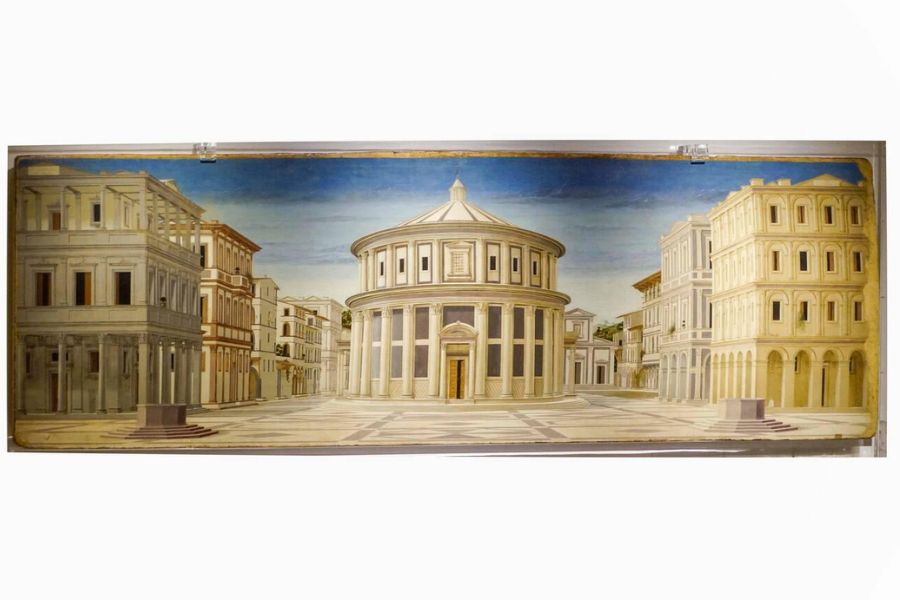
After Laurana, Francesco di Giorgio Martini continued the work, adding his own architectural flair. Together, these masters created a building that feels both grand and intimate – a rare achievement in Renaissance architecture.
Exploring the Ducal Palace of Urbino
My visit through the palace revealed countless architectural highlights. The twin towers that frame the façade create a balanced silhouette against Urbino’s skyline. Inside, I was captivated by the famous spiral staircase – an engineering marvel that allows for a smooth, gradual ascent.
The Throne Room showcases perfect proportions, with windows precisely placed to create ideal natural lighting. I spent extra time in the courtyard, where classical columns support elegant arcades in perfect mathematical harmony.
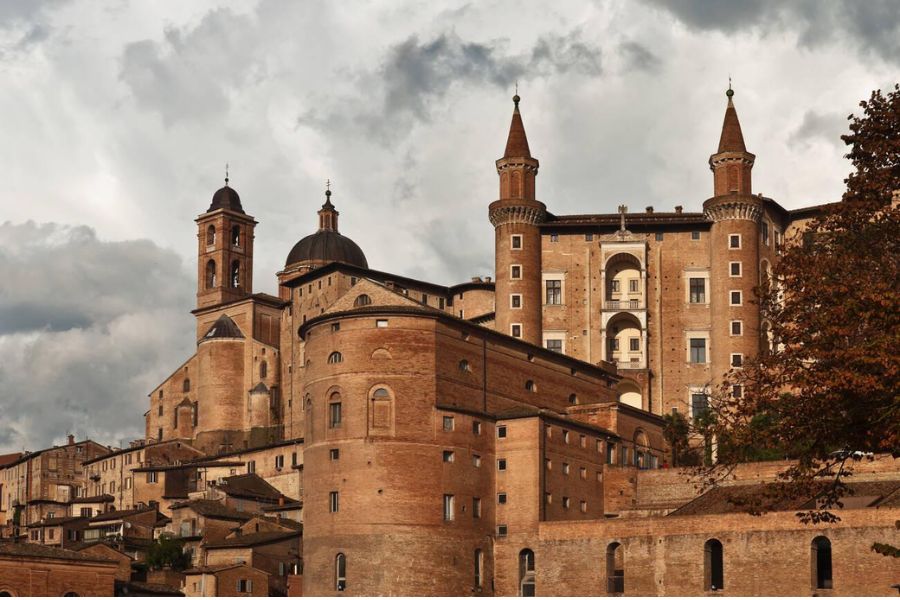
UNESCO recognized the palace’s significance by declaring it a World Heritage site. Today, it houses the National Gallery of the Marche with masterpieces by Raphael and other Renaissance artists. The palace’s design brilliantly accommodates this dual role as both historic monument and modern museum.
Raphael and the Florentine Connection
Raphael’s journey from Urbino to Florence in 1504 marked a pivotal moment in Renaissance art history, creating a bridge between two influential Italian artistic centers. The young artist’s formative years in Urbino and his subsequent immersion in Florence’s artistic innovations would shape his distinctive style and contributions to the art world.
Raphael’s Early Life in Urbino
Raffaello Sanzio, known simply as Raphael, was born in Urbino in 1483. I was struck by how deeply his early environment influenced his artistic development. His father, Giovanni Santi, worked as a court painter, giving young Raphael his first exposure to art.
Walking through Urbino’s perfectly proportioned Ducal Palace, I could sense the refined atmosphere that shaped Raphael’s aesthetic sensibilities. The elegant architecture and sophisticated court culture of Urbino under Federico da Montefeltro provided the perfect nurturing ground for a budding artist.
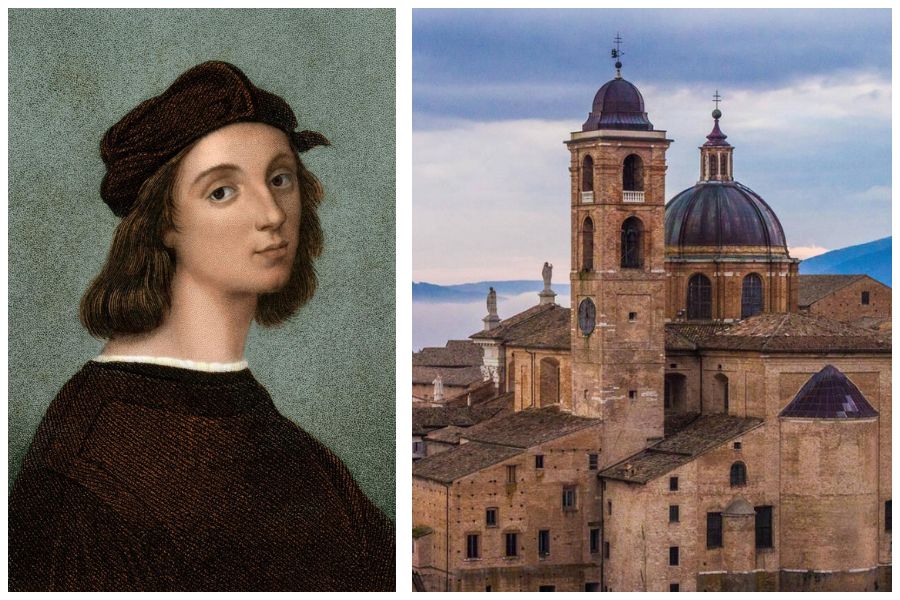
The city’s emphasis on harmony and mathematical precision in design would later become hallmarks of Raphael’s work. These early influences remained with him throughout his career, even as he absorbed new techniques and styles.
The Mastery of Florentine Art
In autumn 1504, at just 21 years old, Raphael traveled to Florence. I imagine him riding on muleback along the winding paths between Urbino and Florence, eager to discover the artistic innovations happening there.
Florence offered Raphael a thriving art market and exposure to revolutionary works by Leonardo da Vinci and Michelangelo. The city was buzzing with artistic competition and innovation.
During his four years in Florence, Raphael studied these masters intensely. He absorbed Leonardo’s sfumato technique and Michelangelo’s approach to human anatomy, yet developed his own distinctive style.
His Florentine period produced remarkable paintings including:
- Madonna of the Goldfinch
- La Belle Jardinière
- Several intimate portrait commissions
Raphael’s Influences and Contributions
What fascinates me about Raphael is how he synthesized multiple influences into something uniquely harmonious. Unlike the tortured genius of Michelangelo or the scientific curiosity of Leonardo, Raphael brought a sense of perfect balance and serenity to his work.
His compositions from this period show increasing sophistication in arrangement and emotional depth. The figures interact with natural grace, positioned in stable triangular formations that would become his signature approach.
Raphael’s talent for absorbing and transforming influences earned him growing fame. His ability to create idealized yet believable human forms and serene compositions made his work instantly recognizable.
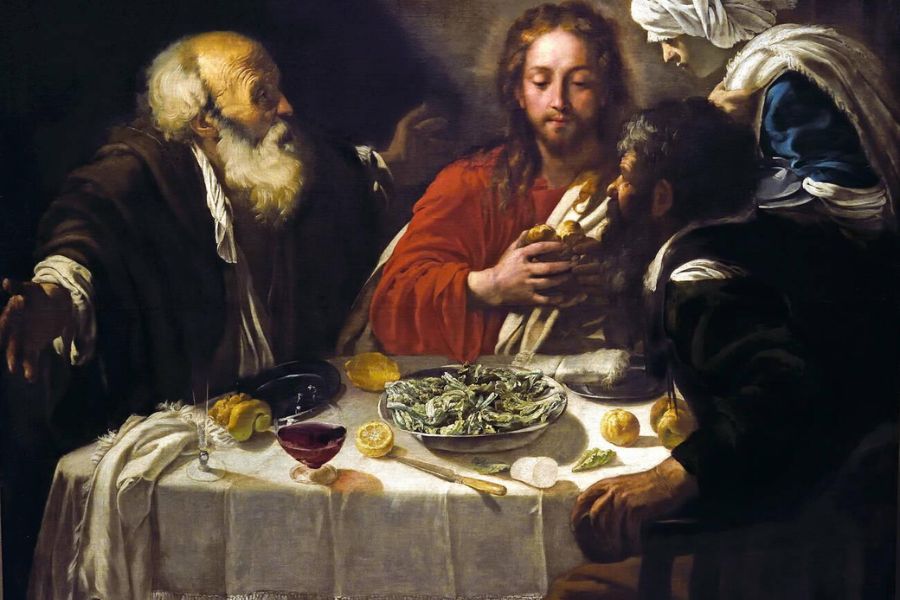
The Florence years transformed him from a promising provincial artist into a master ready for greater commissions. This preparation would serve him well when Pope Julius II later summoned him to Rome to decorate the Vatican apartments.
Artistic and Scientific Synergy in Urbino
Urbino’s Renaissance brilliance came from blending art with science in ways that changed how we see the world. The palace walls seemed to whisper mathematical secrets that influenced generations of artists and thinkers.
A Cradle of Perspective and Realism
Walking through Federico da Montefeltro’s palace, I was struck by how Urbino pioneered what scholars call the “mathematical Renaissance.” Here, Piero della Francesca developed revolutionary techniques in perspective that made flat surfaces appear three-dimensional. His precise calculations transformed painting forever.
I found myself standing where artists once studied geometry alongside painting. Federico’s court attracted brilliant minds who believed art and mathematics were two sides of the same coin.
The duke’s famous studiolo—his tiny private study—showcases this perfect marriage of science and art. Its intricate wood inlays create optical illusions that still amaze visitors today.
The Interplay between Art and Science
Urbino’s influence spread far beyond its walls. As I explored the palace collections, I realized how this small hill town shaped Leonardo da Vinci’s approach to studying nature through both artistic and scientific lenses.
The philosophical discussions in Urbino’s court centered on creating a new kind of knowledge. Artists studied anatomy to paint more realistic figures. Architects applied mathematical principles to create harmonious spaces.
I was fascinated to learn that Urbino’s approach to realism wasn’t just technical—it was philosophical. The goal wasn’t simply to copy nature but to understand its underlying principles.
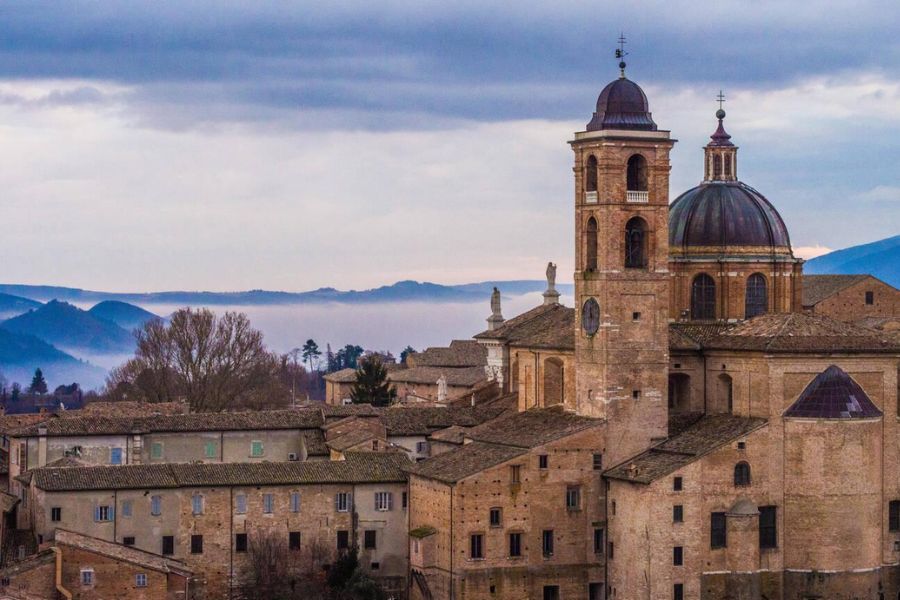
The duke himself embodied this integration, collecting scientific instruments alongside masterful paintings. His library contained volumes on philosophy, mathematics, and artistic technique—all considered equally valuable paths to truth.
Urbino’s Legacy: Beyond the Walls of the City
Urbino’s influence stretched far beyond its hilltop boundaries, creating ripples throughout Renaissance Italy and beyond. The cultural achievements born in this small city helped shape European art, architecture, and thinking for centuries to come.
Urbino’s Export of Culture and Knowledge
Walking through Urbino today, I’m struck by how this tiny city produced such outsized influence. Raphael, born here in 1483, carried Urbino’s artistic vision to Rome, where his work in the Vatican transformed Renaissance painting forever. His frescoes in the Vatican’s Stanze della Segnatura show clear influences from his Urbino upbringing.
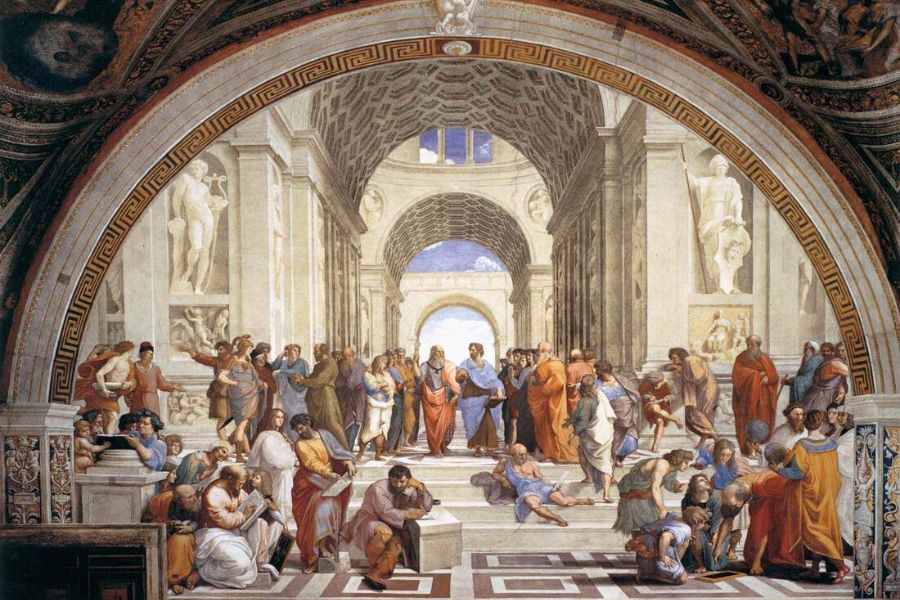
The city’s intellectual traditions spread through its university, one of Italy’s oldest. Founded in 1506, it educated generations of scholars who carried Urbino’s ideas throughout Europe.
Duke Federico’s famous library became a model for others, including the Vatican Library. I’ve seen manuscripts that originated in Urbino now displayed in collections across Italy and Europe.
The Spread of Renaissance Ideas
Urbino’s “mathematical Renaissance” focused on proportion, perspective, and harmony – concepts that changed how people understood space and design. These ideas traveled through artists and architects trained in the Urbino tradition.
The Ducal Palace itself became an architectural blueprint that influenced buildings across Italy. When I visit Renaissance palaces in other cities, I often spot elements first perfected in Urbino.
The city’s commitment to humanism and classical learning helped fuel the broader Renaissance movement. Books and ideas from Urbino’s intellectual circles found their way to Florence, Venice, and beyond.
Even today, I see Urbino’s legacy in modern Italy’s dedication to preserving classical beauty and proportion in its urban spaces. This small city’s big ideas continue to shape our understanding of art, architecture, and human potential.
Planning Your Visit to Urbino’s Perfect Palace
Visiting Urbino’s Ducal Palace requires some planning to fully appreciate this Renaissance masterpiece. The palace offers different experiences throughout the year, with various exhibits and crowd levels that can affect your visit.
Best Times to Explore
I found that spring (April-May) and early fall (September-October) offer the perfect balance of pleasant weather and manageable crowds.
During these shoulder seasons, the light filtering through the palace windows creates a magical atmosphere that enhances the artwork.
Summer brings more tourists, especially in July when Urbino hosts cultural festivals. If you visit then, arrive early around 9 AM to beat the tour groups.
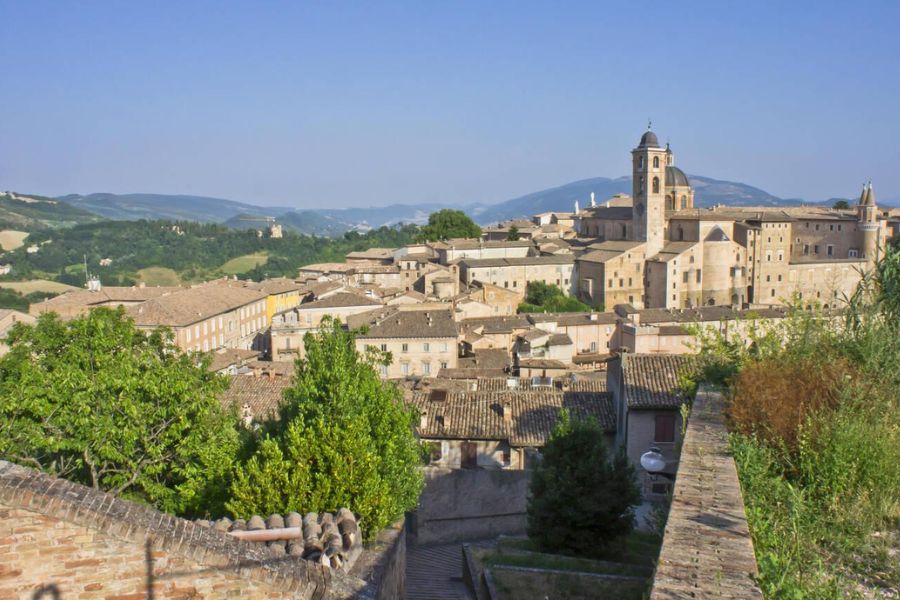
Winter visits have their own charm—fewer visitors mean more space to admire the detailed architecture. I practically had entire rooms to myself when I visited last January!
The palace is closed on Mondays, so plan accordingly.
Experiencing the Ducal Palace Today
The Ducal Palace now houses the National Gallery of the Marches, featuring outstanding Renaissance works. Don’t miss the famous studiolo with its remarkable intarsia woodwork—it’s a highlight that rivals anything in the Uffizi Gallery.
I recommend starting at the courtyard to appreciate the perfect proportions before heading upstairs.
The guided tours (available in English at 11 AM and 3 PM) reveal fascinating details you might otherwise miss.
The Tempietto delle Muse section houses classical sculptures and provides a quieter moment away from the main galleries.
Allow at least 2-3 hours to fully appreciate the collection. Photography is permitted without flash in most areas.
Practical Tips for Travelers
Tickets cost €8 for adults. Seniors and students get discounts. The combined ticket (€12) includes access to other Urbino museums. It’s worth the extra few euros.
I recommend downloading the palace’s audio guide app before your visit. It works offline and offers more detailed information than the printed guides.
Wear comfortable shoes! The marble floors are beautiful but unforgiving after hours of walking.
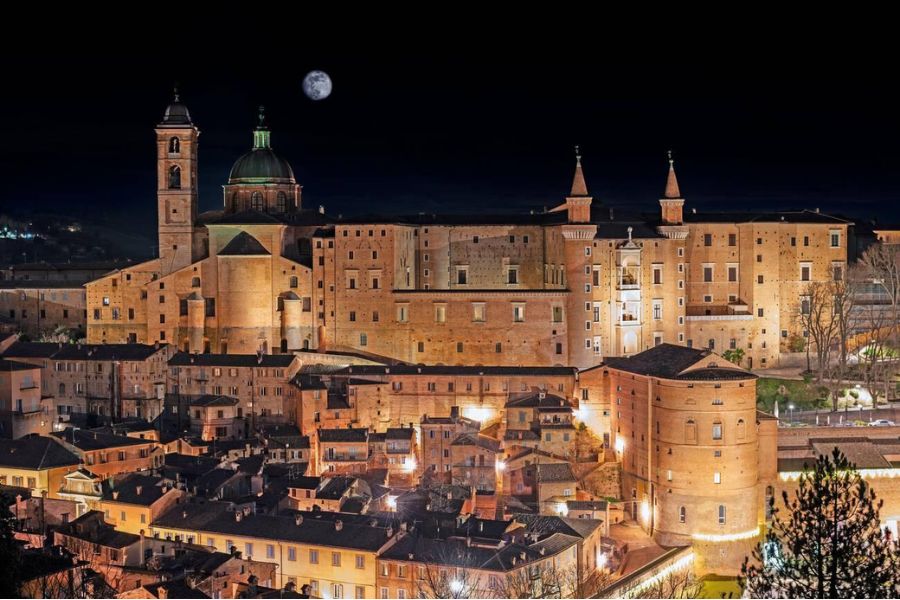
The café on the ground floor offers decent espresso and light snacks when you need a break. For accessibility, elevators serve all floors. However, some of the narrower corridors may be challenging for wheelchairs.
Parking is limited in Urbino’s historic center. I suggest using the lots outside the walls and taking the shuttle into town.

